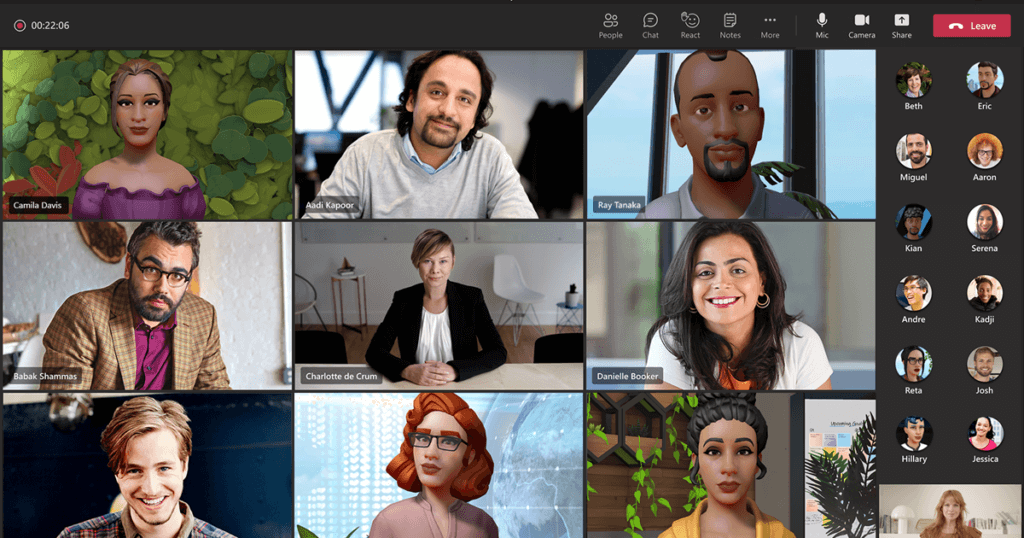The second edition of Ignite, Microsoft’s annual software event, took place this week (November 2-4) virtually once again – hosted in Teams, naturally. Of course, Microsoft is a big company and according to the keynote over 90 major updates, products, and services were announced over the course of the conference and most of them weren’t XR related. So, we sifted through it, so you won’t have to.
Insights From Microsoft’s CEO Himself
If there is one takeaway from the event, it’s exactly what you might have guessed: Microsoft is going long on the metaverse. This was largely prompted by the need for connection during the height of the pandemic, creating a “new normal” built largely around remote work and commerce.

“Looking back, there is no question that the last year-and-a-half has been a huge catalyst,” CEO Satya Nadella said in his keynote. “The case for digital transformation has never been so urgent.”
Nadella also commented on “every business becoming a digital business” and the need for increased trust and increased digital security. According to Nadella, these needs are both exacerbated and solved by the dawn of the metaverse, which he described as “a new application type” that we talk about now like we talked about the internet in the early ‘90s.
“As the digital and physical worlds are coming together, we are creating a whole new platform layer which is the metaverse,” said Nadella. “The metaverse allows us to embed computing into the real world and to embed the real world into computing.”
Mesh Is Coming to Teams
The first major XR announcement of the event was predictable, but we’re still happy to see it. Mesh is being integrated into Teams next year. In case you forgot, Mesh is the real-time MR platform that Alex Kipman announced at this year’s first edition of Ignite in March. There have been opportunities to experience Mesh, largely through AltspaceVR, but other than that we haven’t seen much of it.

Initially, this integration will allow users to present as avatars in video calls. And not just any avatars, avatars with real-time expression and gestures assisted by AI to match a user’s voice and tone. Eventually, the integration will also allow virtual spaces accessible through links within the standard Teams tools.
The New Tool for Building Digital Twins
Another metaverse application isn’t yet an XR application – but there’s every reason to think that it will be. Dynamics 365 Connected Spaces is a new SAAS solution that uses cameras already on premises to gather input to create adaptive digital models of a campus.

“Metaverse applications are a combination of Cloud and Edge working together and the foundation is data in the form of a digital twin,” said Microsoft General Manager Vishal Sood. “With just a few cameras, anyone can experience the benefits of bridging the physical and the digital.”
The showing that we got at Ignite didn’t include using the data to create virtual worlds, or even spatially navigable digital twins, but the potential is definitely there. That kind of action combined with the content that we’re already seeing from Mesh could create something like the Reality Cloud that Varjo announced earlier this year, turning real worlds into virtual worlds in real time.
See You Next Year (In Mesh?)
Even the announcements that Microsoft made won’t roll out to most users until next year. However, just about everything that was announced played into the idea of connecting businesses to consumers and workers to one another, including through what could be the beginning of a robust metaverse contender.




